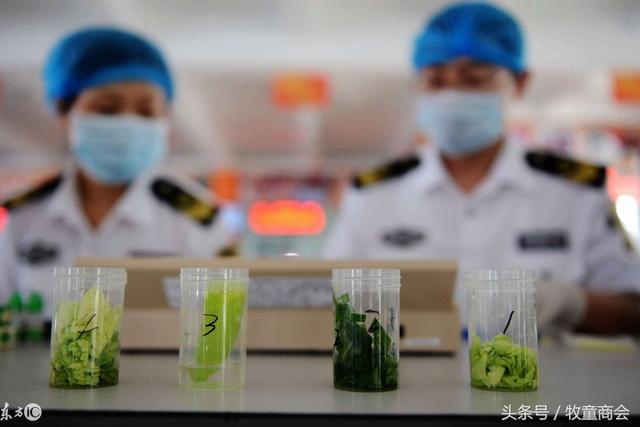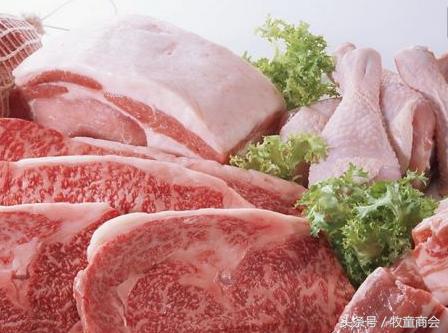How to do if there are drug residues in Chinese veterinary medicine in breeding?

In food safety, the problem of agricultural and veterinary drug residues has attracted much attention, especially veterinary antimicrobials. A few days ago, the Ministry of Agriculture once again issued a notice demanding to stop the use of olaquindox, aminophenyl arsonic acid and roxarsone in food animals.

In recent years, the Ministry of Agriculture has continuously stepped up the risk assessment and safety re-evaluation of veterinary drugs, and a total of 8 veterinary drugs have been banned from food animals in the past three years. That is, in 2015, lomefloxacin, pefloxacin, ofloxacin and norfloxacin were banned from sharing antibiotics for food animals, and non-prednisolone was banned for food animals in 2017. this time, olaquindox, aminophenylarsonic acid and roxarsone are prohibited from being used in food animals. In addition, colistin sulfate premixtures were banned for animal growth promotion in 2016. So what other veterinary antimicrobials are available now? How should we treat and use it?
At present, the veterinary antimicrobials approved for use in the animal breeding industry in China are divided into two categories: antibiotics and synthetic antibiotics, which are used to prevent and control animal diseases and promote growth. Among them, the main varieties of antibiotics are β-lactam, aminoglycosides, tetracyclines and so on, a total of 56 varieties, and the main varieties of synthetic antibiotics are sulfonamides, quinolones and other synthetic antibiotics, a total of 45 varieties. Among them, there are 14 products of growth-promoting antimicrobial feed additives that are allowed to be added to commercial feed for long-term use, which has been reduced to 11 products after this ban.

Veterinary antimicrobials are double-edged swords, which play an important role in the prevention and control of animal diseases, but they need to be standardized and used reasonably. It is understood that antibiotics approved for use as veterinary drugs in China have to go through strict examination and approval procedures before they are put on the market, and relevant pharmaceutical, safety and efficacy tests must be completed, and only after strict evaluation and strict examination can they be approved for production and use. The scope of use, dosage and withdrawal period of veterinary antibiotics approved for market are clearly defined. If the animal products are used reasonably and standardized in accordance with the stated use, usage and drug withdrawal period, the problem of excessive antibiotic residues in animal products will not occur.
If there are antimicrobial residues in food of animal origin, will it be harmful to the human body? Only when the veterinary drug residues reach a certain extent, that is, exceeding the prescribed safety limit, will it be harmful to human health. For this reason, the International Codex Alimentarius Commission and developed countries in Europe and the United States have formulated the safety limit standard of antibiotic residues in meat, eggs, milk and other livestock and poultry products according to the types and purposes of use of antibiotics, namely maximum residue limits (MRL). This safety limit assumes that it will not cause any harm if you take it every day of your life. With reference to international standards and European and American standards, the Ministry of Agriculture has also formulated and issued China's "maximum limits for Veterinary Drug residues in Food of Animal Origin".
In real life, as long as the veterinary drug residue in animal-derived food is lower than the prescribed safety limit, the product is considered safe and safe to eat. Now some people think that as long as veterinary drug residues are detected in food of animal origin, it is considered unsafe, which is a misunderstanding.

The Ministry of Agriculture also said that it will always attach great importance to it and take more measures to carry out in-depth comprehensive management of veterinary antimicrobials, focusing on the three cards of "producing good drugs", "using less drugs" and "using good drugs", and strive to achieve the goal of "reducing drug use and product safety".
- Prev

Bees breeding you ask me to answer-how to divide bees artificially?
Artificial bee division refers to the extraction of honey powder spleen, son spleen and adult spleen to form a new colony. After artificial distribution of bees, to the main flow of honey.
- Next

Fish culture method "common freshwater ornamental fish" blue early tail
Origin and distribution of blue early tail: Venezuela, Guyana, West Indies, archipelago morphological characteristics: the male's front body to back body is evenly covered with gold or silver.
Related
- On the eggshell is a badge full of pride. British Poultry Egg Market and Consumer observation
- British study: 72% of Britons are willing to buy native eggs raised by insects
- Guidelines for friendly egg production revised the increase of space in chicken sheds can not be forced to change feathers and lay eggs.
- Risk of delay in customs clearance Australia suspends lobster exports to China
- Pig semen-the Vector of virus Transmission (4)
- Pig semen-the Vector of virus Transmission (3)
- Five common causes of difficult control of classical swine fever in clinic and their countermeasures
- Foot-and-mouth disease is the most effective way to prevent it!
- PED is the number one killer of piglets and has to be guarded against in autumn and winter.
- What is "yellow fat pig"? Have you ever heard the pig collector talk about "yellow fat pig"?

